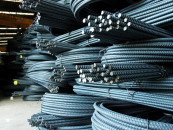Magnificent Xinjiang: unique prosperity on the ancient and modern Silk Road
In recent years, Xinjiang has embarked on a path of rapid development

The Xinjiang Uygur Autonomous Region (Xinjiang) is situated in northwest China and in the hinterland of the Eurasian Continent. It covers an area of 1.6649 million sq-km, accounting for one-sixth of China’s land area. It borders eight countries: Mongolia, Russia, Kazakhstan, Kyrgyzstan, Tajikistan, Afghanistan, Pakistan, and India.
The famous ancient Silk Road stretches for over 7,000 km, with 5,000 km of it passing through Xinjiang. Serving as a crucial “corridor” and “transit station” along the ancient Silk Road, Xinjiang connected ancient China with the world, becoming a crossroads for the north-south and east-west exchanges of various ancient civilisations across the Eurasian continent. Xinjiang also became a melting pot of diverse cultures. Agricultural cultivation techniques, livestock breeding methods, architectural expertise, as well as the production of silk, porcelain, papermaking, metallurgy, hydraulic engineering, and gunpowder manufacturing techniques, all spread through this vital “corridor” of Xinjiang between the East and the West.
Xinjiang has long been an inseparable part of Chinese territory. From the Han (202 BC to 220 AD) to the middle and late Qing Dynasty (19th century), the vast areas of both north and south of the Tianshan Mountains in Xinjiang were called the Western Regions. Xinjiang officially became part of China in the Han Dynasty. All dynasties in the Central Plains regarded the Western Regions as part of Chinese territory and exercised the right of jurisdiction over Xinjiang. In 60 BC, Western Han Dynasty established the Western Regions Frontier Command to exercise military and political administration over the Western Regions. In the Tang Dynasty (618-907), the central government strengthened its rule over the Western Regions by establishing the Grand Anxi Frontier Command and the Grand Beiting Frontier Command to administer the Western Regions. In the Yuan Dynasty (1271-1368), the central government established the Beiting Command and the Pacification Commissioner’s Office to manage military and political affairs in Western Regions. In 1251, the system of administrative provinces was adopted in the Western Regions. In the Ming Dynasty (1368-1644), the central government set up the Hami Garrison Command to manage local affairs. In the Qing Dynasty (1644-1911), the central government adopted more systematic policies for governing the regions and in 1884 it built a province there and renamed the Western Regions as “Xinjiang” meaning “land newly returned”. In 1949, the People’s Republic of China (PRC) was founded, and Xinjiang was liberated peacefully. In 1955, the Xinjiang Uygur Autonomous Region was established.
Never in Chinese history has Xinjiang been referred to as “East Turkistan”. In fact, there has never been a state known as “East Turkistan”. From the 18th century to the first half of the 19th century, as the West made a distinction between the various Turkic languages (branches of the Altaic languages), some foreign scholars and writers coined the term “Turkistan” to refer to the region south of the Tianshan Mountains and north of Afghanistan, which roughly covered the area from southern Xinjiang to Central Asia. They called the two areas on either side of the Pamirs “West Turkistan” and “East Turkistan”. At the turn of the 20th century, as “Pan-Turkism” and “Pan-Islamism” made inroads into Xinjiang, separatists in and outside China politicised the geographical concept and manipulated its meaning, inciting all ethnic groups speaking Turkic languages and believing in Islam to join in creating the theocratic state of “East Turkistan”. The advocacy of this so-called state has become a political tool and programme for separatists and anti-China forces attempting to split China. But the plot never succeeded.
After the founding of the People’s Republic of China, under the leadership of the Communist Party of China, all ethnic groups in Xinjiang united and worked with other groups across the country, opening a period of unprecedented prosperity for the region. Being a place inhabited by multiple ethnic groups since ancient times, Xinjiang has become home to all 56 ethnic groups in China. From 2010 to 2020, the ethnic minority population in Xinjiang increased from 13.06 million to 14.93 million. Among them, the Uyghur population increased from 10 million to 11.62 million, accounting for 45% of Xinjiang’s total population. The various ethnic groups live together in harmony, stability, and unity, tightly embracing each other like pomegranate seeds.
In recent years, Xinjiang has embarked on a path of rapid development. In 2023, Xinjiang’s GDP reached 1.9 trillion yuan, with a year-on-year growth of 6.8%. The growth rates of most economic indicators in Xinjiang rank among the top in the country. Xinjiang has more than 5,400 intangible cultural heritage items at all levels, which receive strict protection and pass on with government funding. Additionally, Xinjiang continuously improves the facilities of religious activity venues and translates and publishes religious texts in various languages, including Islam and Buddhism. Today, the region enjoys rapid growth in all areas and a stable and secure society. The ethnic groups there live in peace and contentment, and its population is experiencing healthy and balanced development.
Nowadays, Xinjiang plays a crucial and pivotal role in the construction of the BRI. As a hub and core area of the Silk Road Economic Belt, Xinjiang not only serves as a gateway for China’s opening to the West but also undertakes the important mission of connecting and constructing this economic belt. It serves as a significant stage for both international and domestic markets and a vital base for fully utilising resources from both international and domestic sources. The construction of the Silk Road Economic Belt has helped Xinjiang establish a comprehensive open pattern, injecting strong impetus into the high-quality economic development of the entire region. Over the past decade, Xinjiang has engaged in economic and trade cooperation with 179 countries and regions, attracting enterprises from 46 countries or regions to invest in Xinjiang.
Seeing is believing. Xinjiang’s magnificent beauty warmly embraces both domestic and foreign tourists. In 2023, Xinjiang received a total of 265 million domestic and foreign tourists, reaching a historic high. This resulted in a total tourism revenue of 296.7 billion yuan, an increase of 227% compared to the previous year. Experts, scholars, journalists, diplomats and religious people from over 100 countries as well as regional and international institutions visited Xinjiang. We sincerely welcome friends from all over the world, including Pakistan, to visit Xinjiang and witness its stunning natural landscapes, rapid economic development, social harmony and stability, diverse and vibrant culture, and the happiness of its people.
Published in The Express Tribune, April 13th, 2024.
Like Opinion & Editorial on Facebook, follow @ETOpEd on Twitter to receive all updates on all our daily pieces.



1729685382-0/Untitled-design-(57)1729685382-0-208x130.webp)











COMMENTS
Comments are moderated and generally will be posted if they are on-topic and not abusive.
For more information, please see our Comments FAQ